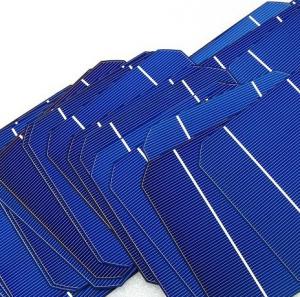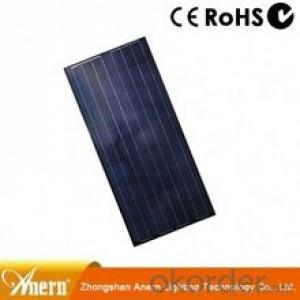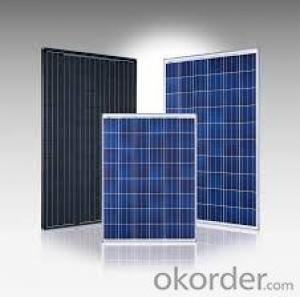Polycrystalline Solar Cells with 3bb A Grace17.8 Efficiency
- Loading Port:
- Shanghai
- Payment Terms:
- TT or LC
- Min Order Qty:
- 10000 watt
- Supply Capability:
- 5000000 watt/month
OKorder Service Pledge
OKorder Financial Service
You Might Also Like
Brief Introduction of Solar Cells
A solar cell, is an electrical device that converts the energy of light directly into electricity by the photovoltaic effect, which is a physical and chemical phenomenon. It is a form of photoelectric cell, defined as a device whose electrical characteristics, such as current, voltage, or resistance, vary when exposed to light. Solar cells are the building blocks of photovoltaic modules, otherwise known as solar panels.
Advantage of Polycrystalline Solar Cells
World’s Leading Manufacturer Equipment. We imported the newest and leading production equipment from abroad. Advanced equipment can guarantee the stable quality of cells. Auto production line can also save labor cost which will further cut our production cost.
Bulk supply: With the production capacity of 500MW, we can produce large quantity every month. This can satisfy most customer requirement.
Usage of Polycrystalline Solar Cells
Solar cells are often electrically connected and encapsulated as a module. Photovoltaic modules often have a sheet of glass on the front (sun up) side, allowing light to pass while protecting the semiconductor wafers from abrasion and impact due to wind-driven debris, rain, hail, etc. Solar cells are also usually connected in series in modules, creating an additive voltage. Connecting cells in parallel will yield a higher current; our solar cells have passed IEC Certification. With high and stable quality, our cells can greatly improve the performance of Solar Modules.
Factory Picture of Solar Cells
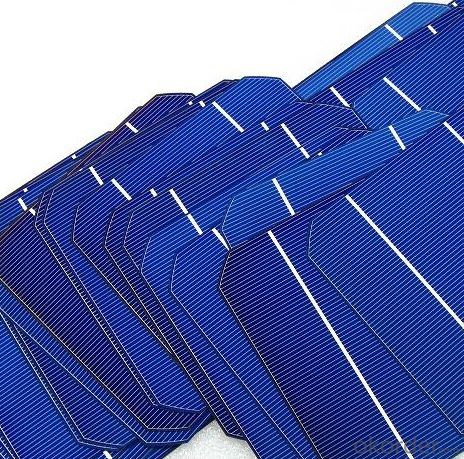
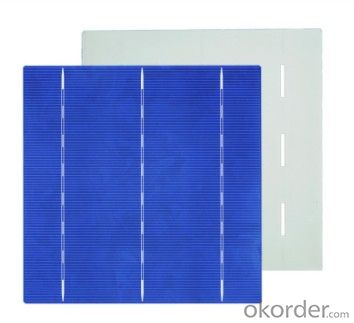

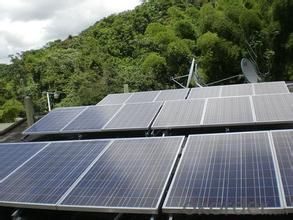
FAQ
We have organized several common questions for our clients,may help you sincerely:
What’s price per watt?
A: It’s depends on the quantity, delivery date and payment terms of the order. We can talk further about the detail price issue. Our products is high quality with lower price level.
Can you tell me the parameter of your solar cells?
We have different series of cells with different power output, both from c-si to a-si. Please take our specification sheet for your reference.
How do you pack your products?
We have rich experience on how to pack the panels to make sure the safety on shipment when it arrives at the destination.
Can you do OEM for us?
Yes, we can.
How long can we receive the product after purchase?
In the purchase of product within three working days, We will arrange the factory delivery as soon as possible. The perfect time of receiving is related to the state and position of customers. Commonly 7 to 10 working days can be served.
- Q:Can solar cells be used for water heating?
- Yes, solar cells can be used for water heating. Solar thermal panels, also known as solar water heaters, use solar cells to convert sunlight into heat energy, which is then used to heat water for various applications such as domestic hot water or space heating.
- Q:Can solar cells be used for outdoor signage?
- Yes, solar cells can be used for outdoor signage. They are an environmentally friendly and sustainable option that can provide power to illuminate and operate outdoor signs. Solar cells can capture sunlight and convert it into electricity, making them an ideal choice for outdoor signage that is located in areas with ample sunshine.
- Q:How to generate solar cells, the principle of PN junction
- Solar energy is an inexhaustible renewable energy source for human beings, and it is clean energy and does not produce any environmental pollution. In the effective use of solar energy; solar energy photoelectric utilization is the fastest growing and most dynamic in recent years
- Q:Can solar cells be used for powering satellites?
- Yes, solar cells can be used for powering satellites. Solar cells are often used as the primary power source in satellites due to their ability to convert sunlight into electricity. The solar cells are typically mounted on the satellite's surface to capture sunlight and generate power for various systems and instruments onboard.
- Q:Can solar cells be damaged by hail or other weather events?
- Yes, solar cells can be damaged by hail or other severe weather events. Hailstones can potentially crack or shatter the surface of the solar panels, affecting their efficiency and functionality. Similarly, extreme weather events like hurricanes or heavy storms can cause physical damage by dislodging or breaking the panels, leading to a decrease in their performance. It is important to ensure proper installation and maintenance to minimize the risk of weather-related damage to solar cells.
- Q:How do solar cells affect the value of a property?
- Solar cells can significantly increase the value of a property. They not only provide a reliable and sustainable source of energy, but also reduce electricity bills, making the property more attractive to potential buyers. Additionally, solar panels are seen as a valuable asset that can generate income through net metering or feed-in tariffs, further increasing the property's value.
- Q:How are solar cells connected in a solar panel?
- Solar cells are connected in a solar panel through a series of electrical connections called interconnects. These interconnects form a circuit that allows the flow of electrons between the individual solar cells, ensuring that the electrical current generated by each cell is combined to produce a higher voltage and power output.
- Q:How long does it take to install solar cells on a rooftop?
- The installation time for solar cells on a rooftop can vary depending on various factors such as the size of the system, complexity of the installation, and the experience of the installation team. However, on average, a typical residential installation can take anywhere from one to three days.
- Q:Can solar cells be used in powering medical devices?
- Yes, solar cells can be used to power medical devices. Solar cells can convert sunlight into electricity, which can then be used to directly power or recharge batteries of various medical devices such as pacemakers, insulin pumps, and portable diagnostic equipment. This renewable energy source offers a sustainable and efficient solution for powering medical devices, especially in remote or resource-limited areas where access to electricity may be limited.
- Q:Can solar cells be used for powering outdoor surveillance systems?
- Yes, solar cells can be effectively used for powering outdoor surveillance systems. Solar cells convert sunlight into electricity, providing a reliable and sustainable source of power for surveillance cameras, sensors, and other surveillance system components. This eliminates the need for conventional power sources and reduces the costs associated with connecting to the electrical grid. Additionally, solar-powered surveillance systems can be easily installed in remote or off-grid locations, making them highly flexible and efficient for outdoor surveillance applications.
1. Manufacturer Overview |
|
|---|---|
| Location | |
| Year Established | |
| Annual Output Value | |
| Main Markets | |
| Company Certifications | |
2. Manufacturer Certificates |
|
|---|---|
| a) Certification Name | |
| Range | |
| Reference | |
| Validity Period | |
3. Manufacturer Capability |
|
|---|---|
| a)Trade Capacity | |
| Nearest Port | |
| Export Percentage | |
| No.of Employees in Trade Department | |
| Language Spoken: | |
| b)Factory Information | |
| Factory Size: | |
| No. of Production Lines | |
| Contract Manufacturing | |
| Product Price Range | |
Send your message to us
Polycrystalline Solar Cells with 3bb A Grace17.8 Efficiency
- Loading Port:
- Shanghai
- Payment Terms:
- TT or LC
- Min Order Qty:
- 10000 watt
- Supply Capability:
- 5000000 watt/month
OKorder Service Pledge
OKorder Financial Service
Similar products
New products
Hot products
Hot Searches
Related keywords



